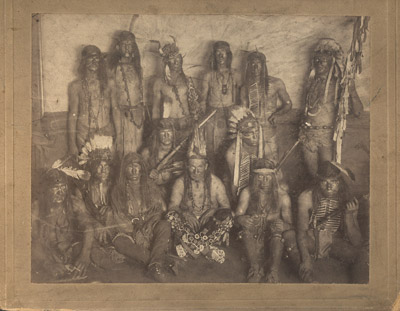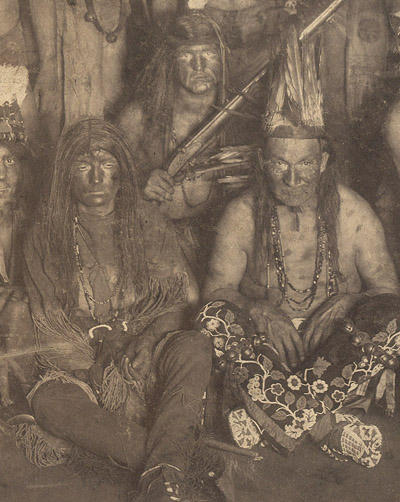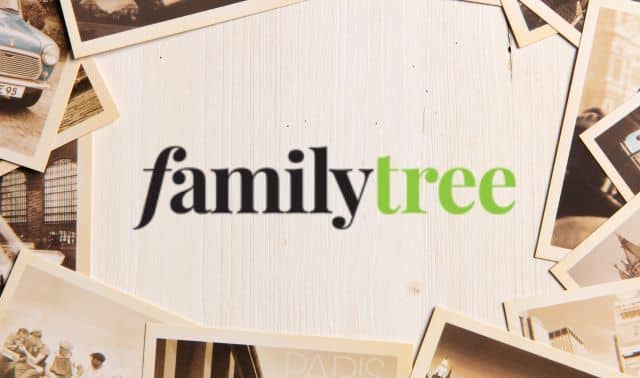Sign up for the Family Tree Newsletter Plus, you’ll receive our 10 Essential Genealogy Research Forms PDF as a special thank you!
Get Your Free Genealogy Forms
"*" indicates required fields

This is quite the photo problem. Contest winner Juliann Hansen and her family have tried for years to figure out the details in this photo.
This week I’m going to outline what we know.
- It was found covered in dust at the Cincinnati Butchers’ Supply Co. (CBS) at Elmwood Place in Cincinnati, Ohio. Hansen’s great grandfather, Carl/Charles G. Schmidt (1851-1930) established the company in 1886. CBS moved to Elmwood Place in the 1940s. It was a new building, so the image didn’t belong to the previous owners of the structure.
- There were generations of both family- and company-related material stored at the site.
- Hansen’s cousin contacted the Cincinnati Historical Society for help deciphering the picture clues.
- Last week I mentioned that the card stock dated from the late 1890s to early 20th century, circa 1900.
- I asked Hansen if anyone in her family was once a member of a fraternal organization. She told me that her father and uncle were Masons, but didn’t know about her grandfather or his father.
The big question is why is a group of late-19th-century men posing bare-chested and in some cases dressed only in loin cloth?
An article in Queen City Heritage, a now-defunct publication of the Cincinnati Historical Society, by Susan Labry Meyn, ” Mutual Infatuation: Rosebud Sioux and Cincinnatians,” (Queen City Heritage, Spring/Summer 1994 issue, 30-48, available online through the Cincinnati Historical Society) sheds some light on the matter.
- In 1895, the Cincinnati Zoo brought a Cree village to the area complete with actual members of the tribe. They also had a section of the zoo devoted to Arabian, Kurdish, Egyptian and Armenian families. These living displays were very popular.
- Buffalo Bill’s frontier show visited Cincinnati in the Spring of 1895.
- In the summer of 1896, the Cincinnati Zoological Society transported 89 Sicangu Sioux for a display and had them offer western reenactments of famous battles and stagecoach attacks.
- Also the summer of 1896, Mayor Gordon Lilly, known as “Pawnee Bill,” planned a frontier show with a program called “Cincinnati One Hundred Years Ago” that competed with the Zoo’s “Historical Cincinnati” show.
Look at this close-up of the photo. The men have painted their faces. You can see some light-colored lids in the crowd. Some of their accessories look like the duplicates you could purchase in dime stores at the time.
Perhaps this group is just one of the performances held in Cincinnati in the late 1890s. Photos of the Cree village and the Sioux display are available in Meyn’s article, but these men aren’t wearing the same tribal clothing.
It’s also possible that this is just a group of Cincinnati men dressed in imitation of the “Indian” craze that swept through the area.
The final answer has yet to be determined.
Solve your family photo mysteries with these books by Maureen A. Taylor:
ADVERTISEMENT





